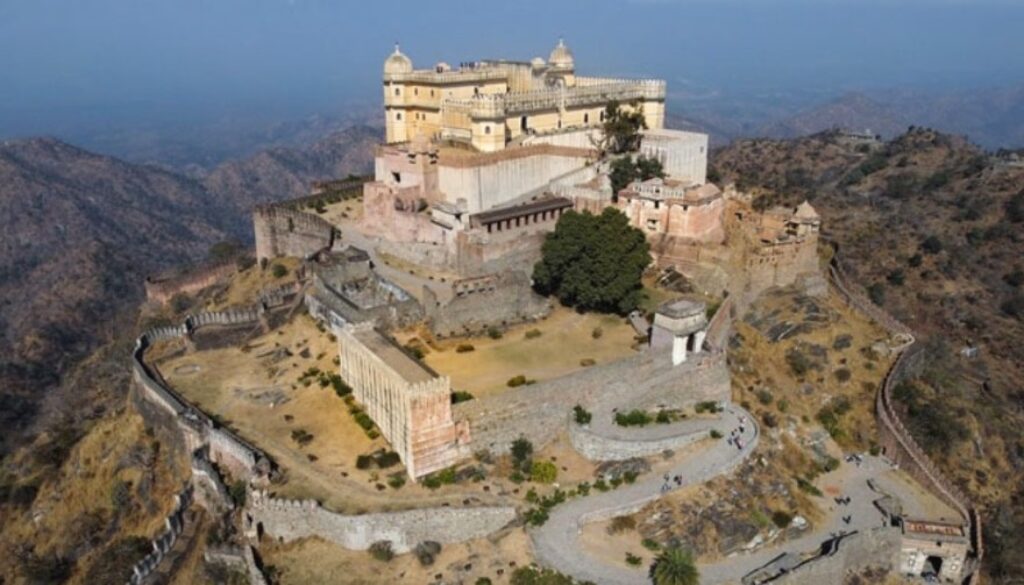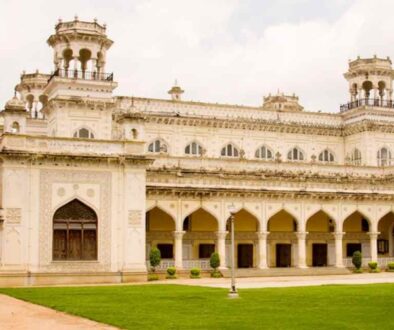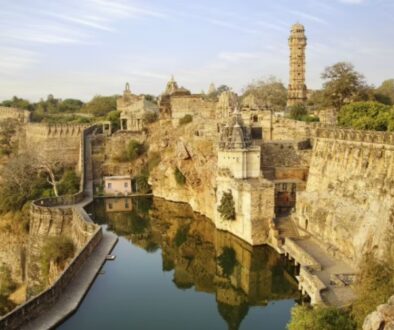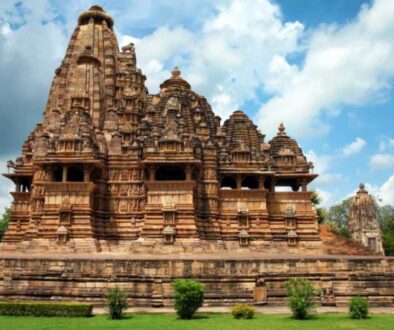Kumbhalgarh: The Great Wall of India and Rajasthan’s Majestic Fortress
Amidst the rugged Aravalli Hills, where history meets breathtaking landscapes, stands Kumbhalgarh—a fortress of unparalleled grandeur and an untold legacy. Known for having the second-longest continuous wall in the world after the Great Wall of China, Kumbhalgarh is more than just a historical marvel; it is a symbol of Rajput valor, resilience, and architectural brilliance.
Often overshadowed by Rajasthan’s more famous cities like Jaipur and Udaipur, Kumbhalgarh remains a hidden gem, offering visitors a perfect blend of history, nature, and adventure. Whether you’re a history buff, an explorer, or a photography enthusiast, Kumbhalgarh promises an unforgettable experience.
A Glimpse into Kumbhalgarh’s Glorious Past
Built in the 15th century by Maharana Kumbha, Kumbhalgarh Fort served as a strategic stronghold of the Mewar kingdom. It was designed to be impenetrable, with massive walls stretching over 36 kilometers, guarding the kingdom from enemy invasions.
Kumbhalgarh is also the birthplace of Maharana Pratap, the legendary Rajput warrior who defied the Mughal emperor Akbar. Over the centuries, the fort witnessed numerous battles, betrayals, and heroic sacrifices, making it one of Rajasthan’s most historically significant sites.
Top Attractions in Kumbhalgarh
While the fort itself is the crown jewel, Kumbhalgarh has much more to offer—from scenic views to ancient temples and wildlife adventures. Here are the must-visit places in and around Kumbhalgarh:
1. Kumbhalgarh Fort – The Great Wall of India
Standing 3,600 feet above sea level, Kumbhalgarh Fort is a UNESCO World Heritage Site and one of the most spectacular forts in Rajasthan. The walls of the fort stretch over 36 km, making it the second-longest wall in the world.
Why Visit?
- Walk along the majestic walls, which offer panoramic views of the Aravalli Hills.
- Explore the palace complex, including Badal Mahal (Palace of Clouds), where Maharana Pratap was born.
- Discover the fort’s 360+ ancient temples, both Hindu and Jain, scattered within its premises.
- Experience the evening light and sound show, bringing Kumbhalgarh’s history to life.
💡 Tip: Visit during sunrise or sunset for a breathtaking view of the fort and surrounding landscape.
2. Badal Mahal – The Palace in the Clouds
Located at the highest point of Kumbhalgarh Fort, Badal Mahal offers stunning panoramic views of the Aravalli Hills and the sand dunes of the Thar Desert in the distance.
What to Expect?
- Beautiful murals and intricate carvings, showcasing Rajput and Mughal influences.
- A peaceful retreat above the fort, away from the crowds.
- Cool and airy chambers, designed to provide natural air conditioning.
💡 Tip: Climb to the top and take in the 360-degree view of Rajasthan’s rugged beauty.
3. Neelkanth Mahadev Temple – The Divine Guardian of the Fort
Within the fort walls lies the Neelkanth Mahadev Temple, dedicated to Lord Shiva. This ancient temple features a massive Shivling, measuring five feet in height, making it one of the largest in Rajasthan.
Why Visit?
- A serene and spiritual atmosphere inside the fort.
- Beautifully carved pillars and intricate temple architecture.
- A chance to witness local Rajput warriors offering prayers to Lord Shiva before battles.
💡 Tip: If you visit during Mahashivratri, you can witness grand celebrations at the temple.
4. Kumbhalgarh Wildlife Sanctuary – A Thrilling Safari Experience
Just beyond the fort, the Kumbhalgarh Wildlife Sanctuary is a paradise for nature lovers and wildlife enthusiasts. Spanning over 600 sq. km, the sanctuary is home to:
- Leopards, sloth bears, Indian wolves, and hyenas.
- Over 200 species of birds, including the rare grey jungle fowl.
- Scenic trekking trails and jeep safaris through the dense forest.
💡 Tip: Opt for a morning or evening safari to maximize your chances of spotting wildlife.
5. Parshuram Mahadev Cave Temple – A Hidden Pilgrimage Spot
For those who love adventure and spirituality, the Parshuram Mahadev Temple is a must-visit. Located inside a naturally formed cave, this temple is believed to be the spot where Sage Parshuram meditated and worshipped Lord Shiva.
Highlights:
- A mystical cave temple tucked away in the Aravalli Hills.
- A trek through scenic trails to reach the temple.
- A peaceful, offbeat experience away from the crowds.
💡 Tip: Wear comfortable shoes, as the trek can be steep and rocky.
Experiencing Kumbhalgarh’s Local Culture and Cuisine
A visit to Kumbhalgarh is incomplete without indulging in authentic Rajasthani flavors and experiencing the local culture.
What to Eat in Kumbhalgarh?
- Dal Baati Churma – The classic Rajasthani dish of baked wheat dumplings, lentils, and sweet churma.
- Laal Maas – A fiery mutton curry slow-cooked with red chilies.
- Ker Sangri – A traditional dish made with desert beans and dried berries.
- Makhaniya Lassi – A thick and creamy yogurt drink, perfect for cooling off.
Where to Stay in Kumbhalgarh?
Kumbhalgarh offers a range of accommodation options, from luxurious resorts to heritage stays:
- The Aodhi by HRH Group: A heritage retreat nestled in the hills.
- Fateh Safari Lodge: A beautiful eco-lodge with stunning views.
- Kumbhalgarh Safari Camp: A perfect blend of comfort and adventure.
Best Time to Visit Kumbhalgarh
The best time to explore Kumbhalgarh is from October to March, when the weather is pleasant and perfect for sightseeing. Summers (April to June) can be hot, while monsoons (July to September) add a refreshing touch of greenery to the landscape.
Major Festivals in Kumbhalgarh
- Kumbhalgarh Festival (December): A grand celebration featuring folk dances, music performances, and light shows.
- Mewar Festival (March/April): A cultural fest dedicated to Rajput heritage.
How to Reach Kumbhalgarh
Kumbhalgarh is well-connected by road, rail, and air:
- By Air: The nearest airport is Maharana Pratap Airport (Udaipur), 95 km away.
- By Rail: The nearest railway station is Falna (80 km away), with connections from Jaipur and Jodhpur.
- By Road: Kumbhalgarh is easily accessible via NH8, with regular buses and taxis from Udaipur (85 km), Jodhpur (170 km), and Jaipur (345 km).
Conclusion: A Timeless Journey into Rajasthan’s Glorious Past
Kumbhalgarh is more than just a fort—it’s a symbol of Rajasthan’s indomitable spirit and architectural excellence. Whether you’re walking along the mighty walls, exploring ancient temples, or trekking through the wilderness, every moment in Kumbhalgarh feels like stepping into a legendary tale of kings and warriors.
So, if you’re looking for a hidden gem that combines history, adventure, and breathtaking landscapes, Kumbhalgarh is calling you! 🏰✨🔥



